Sanctuary’s Mud on Boots: March-April 2024
First published in Sanctuary Asia,
Vol. 44
No. 6,
June 2024
Sanctuary’s Mud on Boots
March-April 2024 Field Updates
Wetlands In Focus
In Maharastra’s Gondia district, Project Leaders Kanhaiyalal Udapure and Shashank Ladekar are strategising wetland management techniques to support wildlife and the livelihood of local communities. They have now shortlisted four interested wetland villages (out of the 10 previously selected) to strengthen biodiversity committees, and ultimately plan approaches to boost wetland ecology.
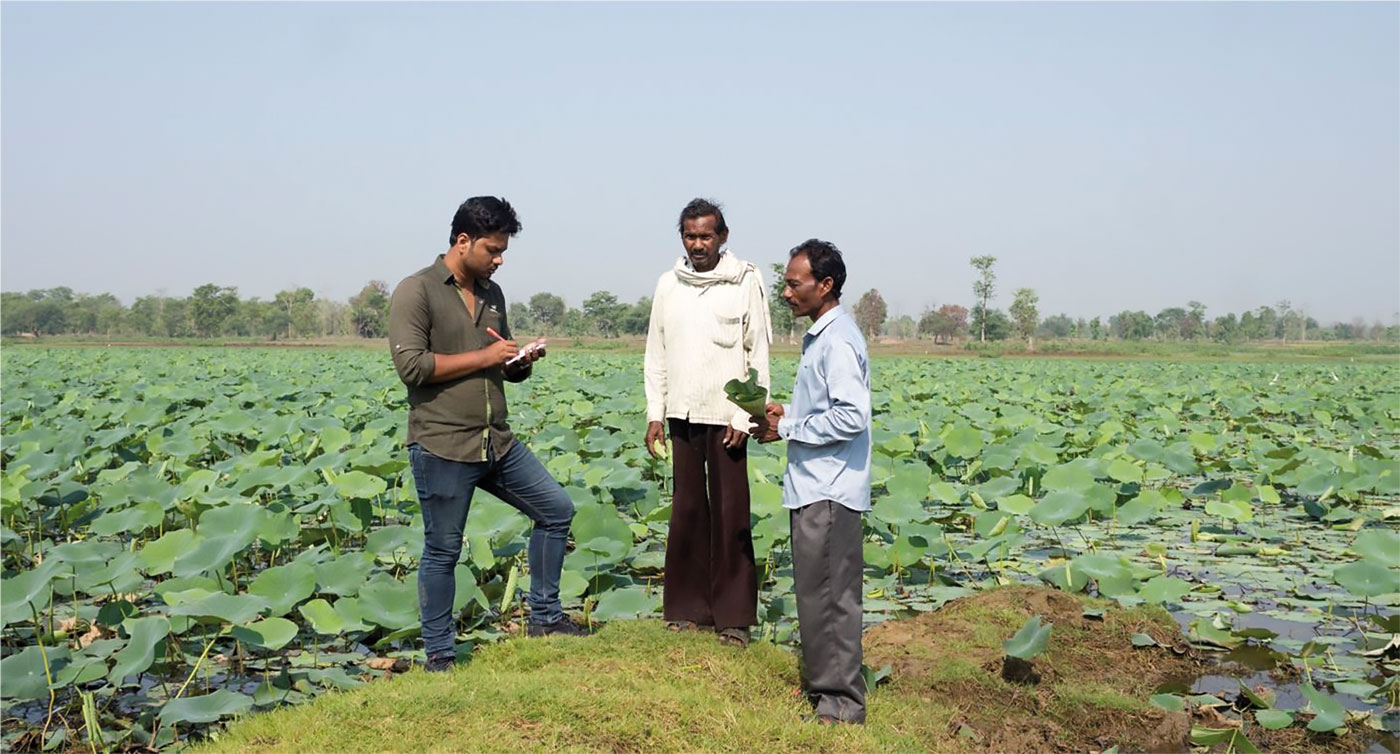
Project Leader Shashank Ladekar interacts with residents of a wetland village in Gondia, Maharashtra. Photo Courtesy: Kanhaiyalal Udapure and Shashank Ladekar.
With guidance from their mentor Shivona Bhojwani, the team is collating data on the bird, fish and aquatic vegetation diversity of the four shortlisted wetland villages (Shivni, Bajartola, Zhilmil and Paraswara) to create five-year management plans with the support and participation of locals. Additionally, they have also identified five wetlands suitable for continuing the seed restoration work in the upcoming monsoon, when trials will be conducted at restoration practices using seed plots.
Mahseer Mysteries
Project Leader Jesu Das has been an integral part of WASI’s project to understand the ecological requirements of mahseer in the Cauvery Wildlife Sanctuary, using radio telemetry. Before the launch of the project, Das had received training to handle specific equipment for tracking and collecting GPS locations and environmental data crucial for the study.
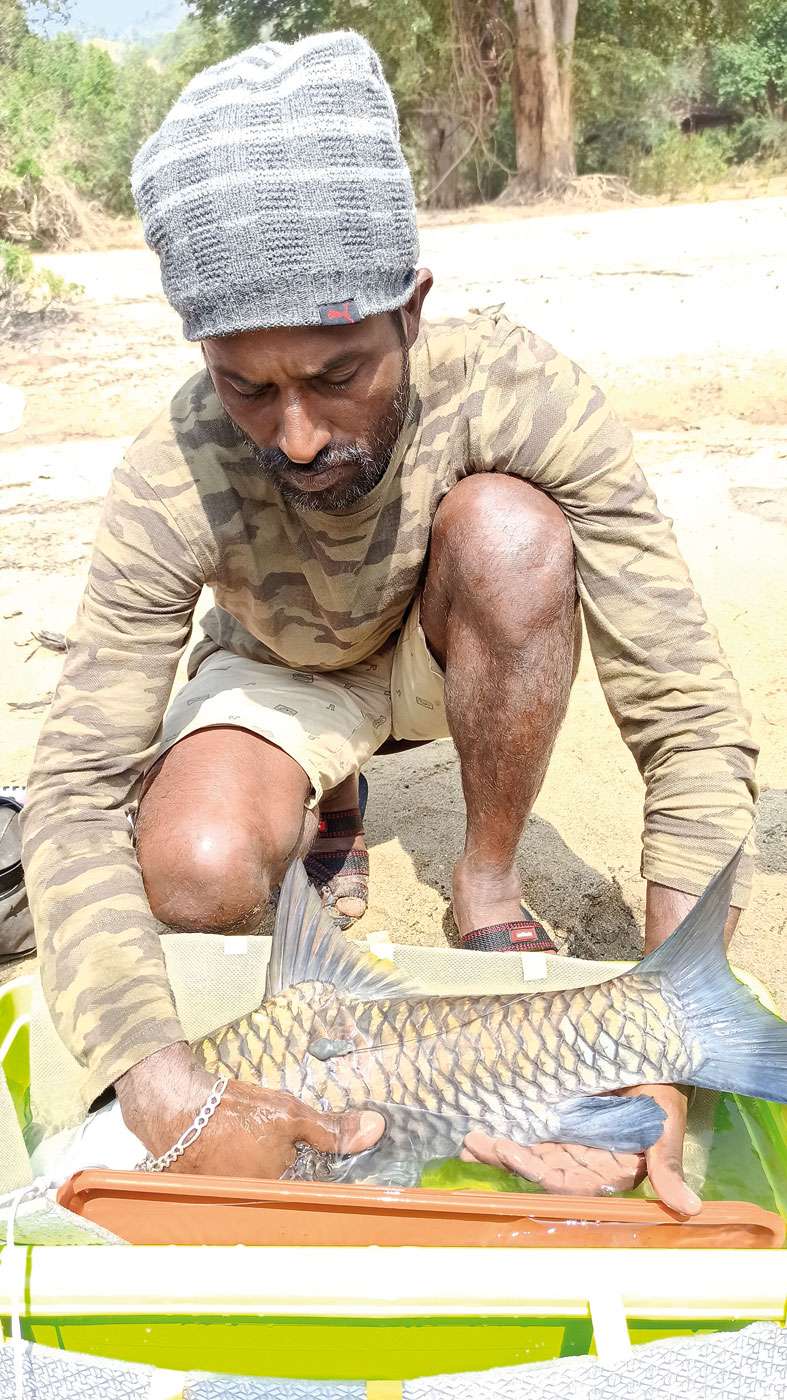
A file image of Project Leader Jesu Das handling a 3.8 kg. adult bluefin mahseer for the mahseer radiotelemetry study. Photo Courtesy: WASI.
Between March and April, Project Leader Jesu Das devoted his time to the mahseer radio telemetry project by training volunteers on radio tracking mahseer, and collecting environmental data for the project. The team has been tracking seven fish since January this year. Just as the new trainees were getting a hang of the fish tracking process, signals from three of the tags went static. While the team managed to recover one of the tags, two transmitters could not be recovered.
Having faced loss of tags in the past as well, the team was elated when on March 12, Das was able to safely capture and tag two new fish, which are now being tracked.
Children Of Nature
In Uttarakhand’s Haridwar district, Project Leader Saddam Husain has been leading nature education sessions to strengthen Maee’s focus on conservation in Gujjar Basti and nearby areas. In the recent past, Saddam has observed that young children in the region seem to be losing the traditional knowledge of nature and wildlife that once formed the base of his Van Gujjar community. Through fun and informative sessions in natural spaces, Saddam hopes to build reverence for nature and inculcate a conservation ethos among the children.
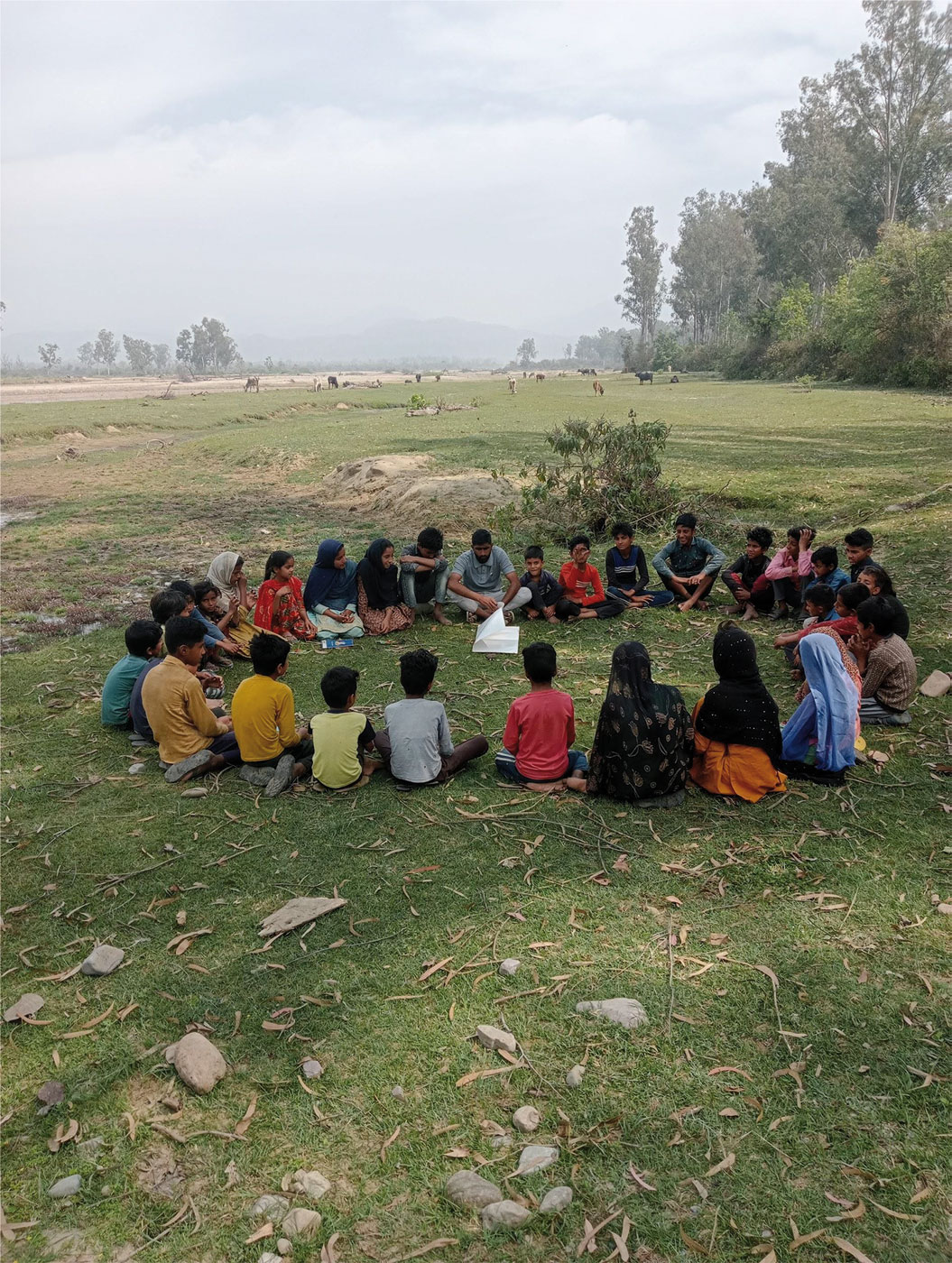
Project Leader Saddam Husain leads a nature education session for Van Gujjar children in Uttarakhand. Photo Courtesy: Maee.
In March-April, Saddam and his friends at Maee organised three nature trails and birdwatching exercises for children in mixed forests and riverine habitats, helping the children identify over 50 species of birds! He also led a tree exploration exercise, where children were encouraged to observe the habitat around two trees. This curiosity-building exercise then formed the basis for a discussion on coexistence and harmony in nature and the impacts of deforestation on forest ecosystems.
Additionally, Saddam and his team documented 134 species of birds in and around the Jhilmil Jheel Conservation Reserve. The team also dedicated time to monitoring the resident swamp deer population in the reserve, documenting 430 adults in a mere seven days.
Asukhomi Days
After taking on the leadership mantle, Project Leaders Ghokivi Yeptho and Katoshe Chishe have been carrying out biodiversity documentation along with members of the Asukhomi Community Reserve Management Committee (ACRMC), Zunheboto (Nagaland).
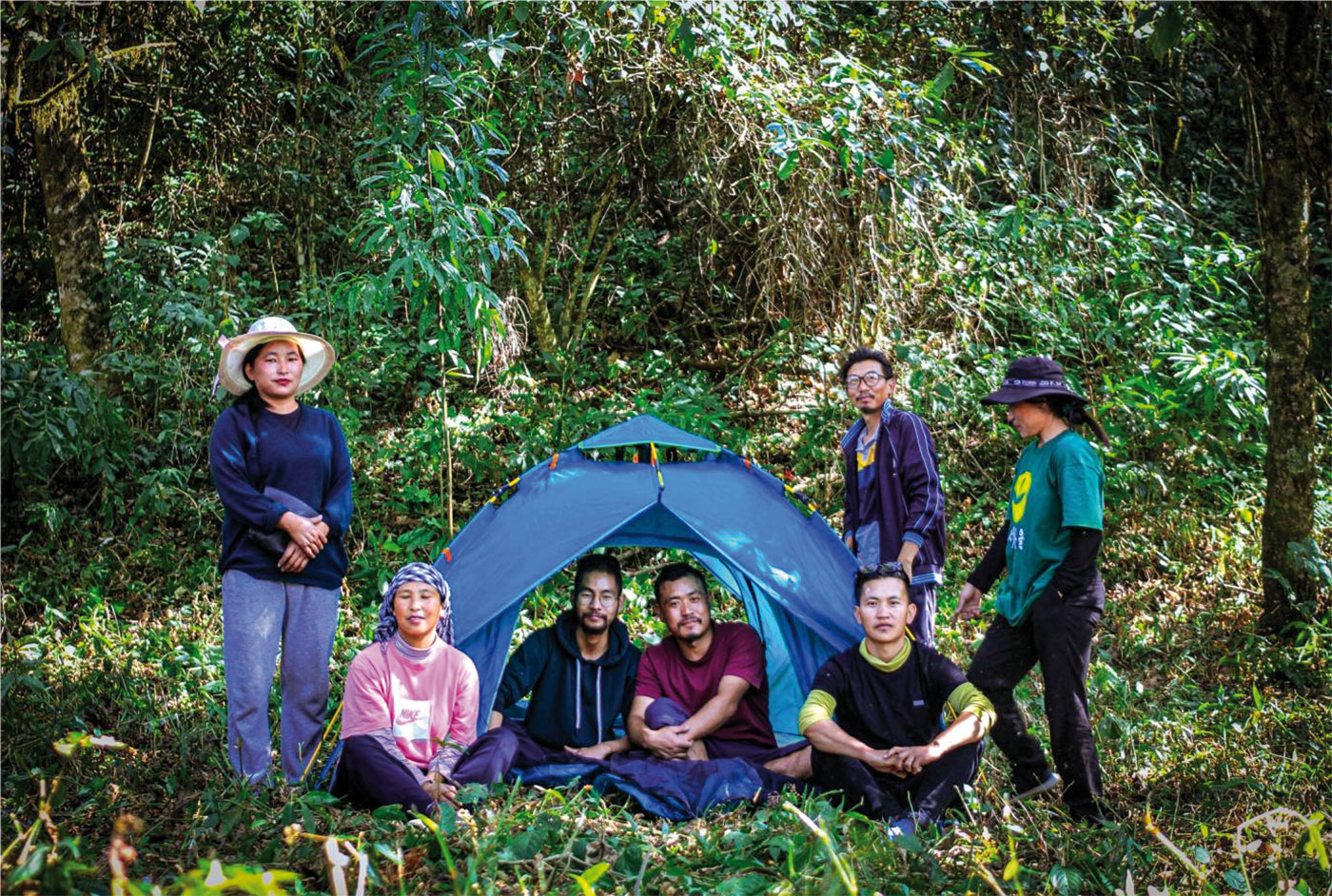
Members of the Asukhomi Community Reserve Management Committee during a biodiversity documentation exercise. Photo Courtesy: ARMC.
While still in the process of streamlining their conservation focus in Asukhomi village, Nagaland, the duo undertook a three-day biodiversity documentation exercise within the reserve. This exercise entailed camping in the reserve to photodocument its biodiversity. The team was able to photograph and identify seven species of plants, a Bengal slow loris, and two types of wild fish, along with other species. In the coming months, Ghokivi and Katoshe plan on initiating conversations on the importance of conservation awareness with the local youth to garner awareness and support for their work.
In The Eye Of The Storm
In Koynardih village, Ranchi district (Jharkhand), Project Leaders Chamru Bediya and Sahebram Bediya are working to save the region’s forests and create nature-based sustainable livelihood opportunities for members of their marginalised Bediya community, under the mentorship of Rishabh Lohia (Founder, Ekastha Foundation).
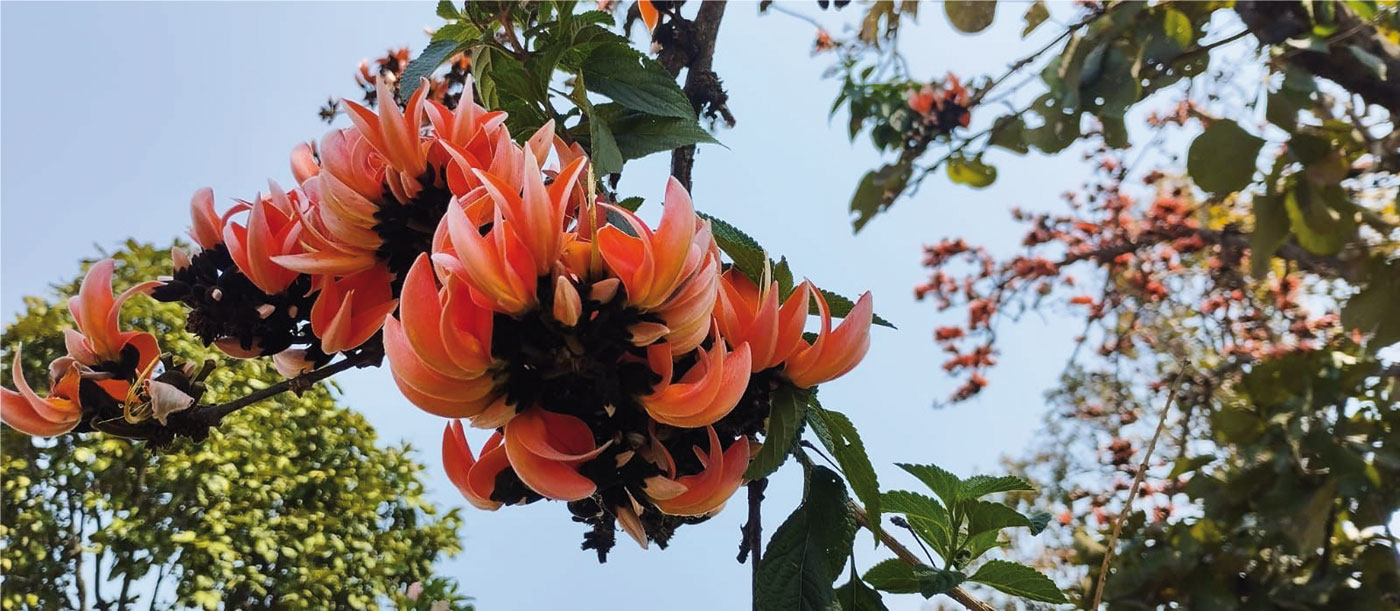
Butea monosperma trees set the canopy ablaze with the colours of spring in Jharkhand’s Koynardih village. Photo: Sahebram Bediya.
March and April are crucial months for the conservation work underway in Koynardih and the nearby areas. Until last year, the team witnessed a spike in incidents of intentional fires ravaging swathes of forest and wildlife hunting during this particular period, laying waste to the team’s year-long efforts. Considering these experiences, Chamru and Sahebram focused their energies on creating awareness to stop incidents of wildlife hunting and intentional fires set to forests in the region. They doubled down on the campaign against forest fires by placing cautionary information throughout the region’s forests, urging commuters against setting fires. Just as their efforts seemed to be bearing fruit, incidents of fires were reported from Jargah Hill and Het Kherwajara. Wasting no time, the duo mobilised six locals and dedicated themselves to putting out the fires. Although disheartened by the setback, they hope to continue their awareness work against deforestation and wildlife hunting.
Additionally, Chamru and Sahebram continued their biodiversity documentation and recorded 66 birds, five mammals, 29 trees and 17 different insects. They were delighted when camera traps set up at strategic locations at Jargah Hill photographed an Asian palm civet, sloth bear, jungle cat, porcupine and wild pigs, providing proof of the region’s mammalian diversity.






